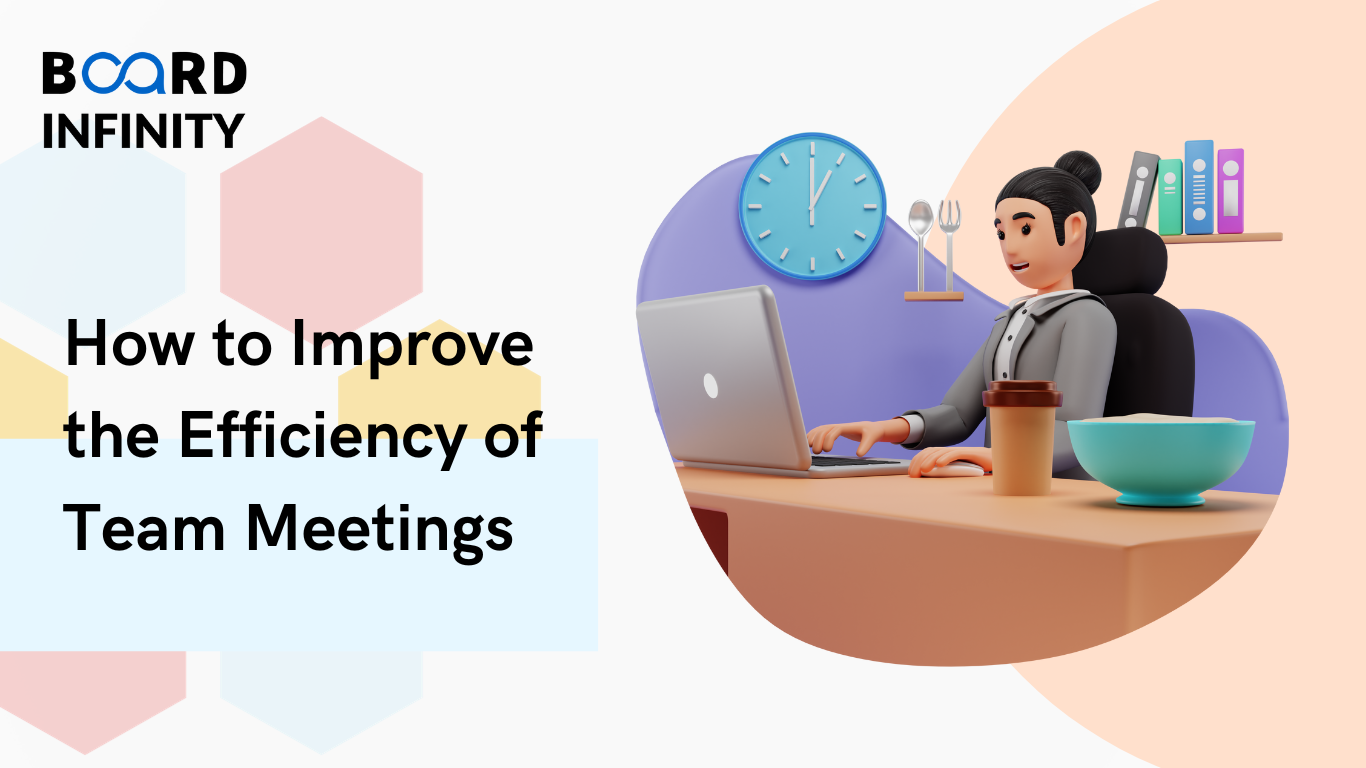
Team meetings are an integral part of any organization, providing a platform for brainstorming, information dissemination, and decision-making. However, without proper planning and execution, these gatherings can quickly become counterproductive, draining both time and resources. By focusing on the right strategies, you can elevate the efficiency of your team meetings, ensuring that they're time well-spent.
Let’s Dive Into Some Best Practices To Improve Efficiency.
1. Set Clear Objectives
Before scheduling a meeting, pinpoint its purpose. Ask yourself:
- What is the desired outcome of this meeting?
- Is it to make a decision, share information, or brainstorm solutions?
A meeting without a clear goal can quickly devolve into a directionless conversation. Once you've identified the objective, communicate it to the participants in advance. This will allow team members to prepare accordingly and ensure the meeting stays on track.
2. Keep It Relevant
Not every meeting requires every team member. To avoid the “too many cooks” scenario, only invite the individuals directly related to the meeting's objective. This not only reduces potential distractions but also saves time for those not directly involved.
3. Manage Time Wisely
Respect everyone's time by starting and ending punctually. Allocate a specific duration for each meeting and stick to it. Using a timer or alarm can be helpful to remind participants of time constraints. Moreover, consider adopting techniques such as the “stand-up meeting” format, especially for daily check-ins, as the simple act of standing can naturally expedite proceedings.
4. Designate a Facilitator
Having a person in charge of steering the conversation ensures the meeting doesn't stray off-topic. The facilitator's role is to guide the discussion, manage time, and ensure everyone has an opportunity to speak. They should be well-versed in the meeting's objectives and capable of managing group dynamics.
5. Write a Clear Agenda
A well-defined agenda is the backbone of an effective meeting. It serves as a roadmap, outlining the key discussion points and ensuring that the team stays focused on the meeting’s objectives. If you’re unsure about how to format an agenda template. Here are some tips for creating an efficient agenda:
- List the Topics: Begin by noting down all the subjects that need to be addressed. This might include project updates, feedback sessions, or new initiatives.
- Prioritize: Not all topics hold the same weight. Rank them based on importance or relevance to ensure the most critical issues get addressed first.
- Allocate Time: Assign a specific duration to each topic. This helps in managing time effectively and ensures that no single issue monopolizes the meeting.
- Specify the Presenter: If a particular topic requires a team member's input or presentation, mention their name next to the topic. This gives them time to prepare and also informs others whom to turn to for specifics.
- Distribute in Advance: Share the agenda with all participants well before the meeting. This allows team members to come prepared, either with data, questions, or feedback related to the topics at hand.
- Stick to It: During the meeting, adhere to the agenda. If new issues arise, note them down for future discussions rather than derailing the current meeting.
6. Eliminate Distractions
In the digital age, distractions are plentiful. Encourage team members to mute notifications, put away unrelated devices, and focus solely on the meeting. Physical environment matters too: choosing a quiet, comfortable meeting room can enhance concentration.
7. Encourage Participation
A meeting's success isn't just about disseminating information, but also about drawing insights from all participants. Create an environment where team members feel comfortable sharing their ideas and concerns.
- Rotate Roles: Let different team members take on the role of the facilitator or note-taker. This provides varied perspectives and keeps everyone engaged.
- Ask Open-Ended Questions: Instead of asking questions that have a simple 'yes' or 'no' answer, pose questions that stimulate discussion and deeper thinking.
- Acknowledge Contributions: Recognize and appreciate team members who offer valuable insights. This fosters a positive culture and motivates others to contribute.
8. Use Technology Wisely
With the rise of remote work, virtual meetings have become commonplace. Platforms like Zoom, Microsoft Teams, and Google Meet offer a plethora of features to enhance meeting efficiency.
- Screen Sharing: Use this feature when discussing complex topics that require visual aids, like presentations or data analysis.
- Breakout Rooms: For larger meetings, these rooms can be beneficial to divide participants into smaller groups for detailed discussions.
- Recording: If some team members cannot attend, record the meeting so they can review it later. However, always seek consent before recording.
Conclusion
Meetings are crucial collaboration tools, but without proper management, they can become inefficient or even counterproductive. By setting clear objectives, crafting a well-defined agenda, leveraging technology, and ensuring follow-through, you can maximize the efficiency of team meetings.
Remember, the goal isn’t just to meet but to meet with purpose. Each gathering should bring value, either in the form of information shared, decisions made, or solutions brainstormed. With the right strategies, you can transform your meetings from time-consuming obligations into powerful instruments of collaboration and productivity.
